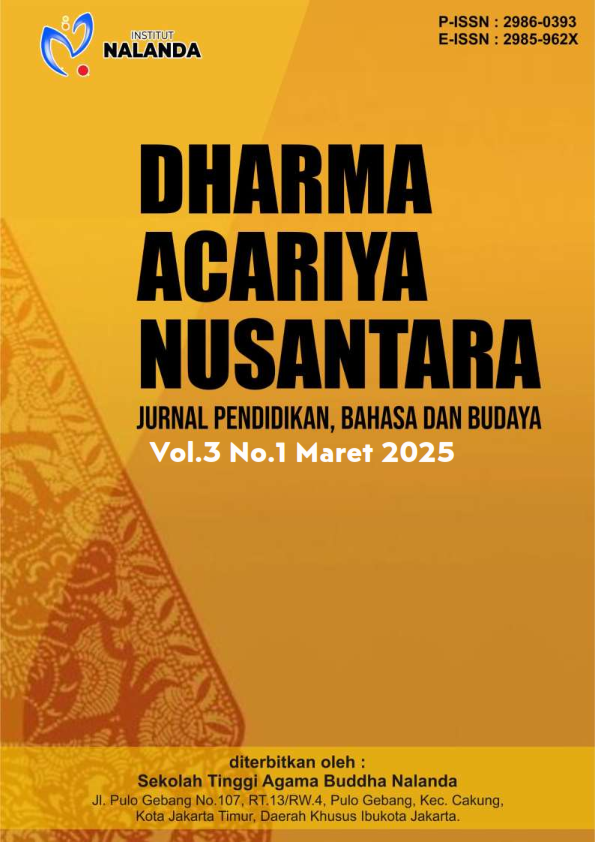Second Account Instagram Sebagai Representasi Identitas Virtual di Kalangan Mahasiswi Universitas Udayana
DOI:
https://doi.org/10.47861/jdan.v3i1.1904Keywords:
Virtual Identity, Instagram, Second AccountAbstract
The presence of second accounts allows users greater freedom in expressing themselves compared to their main accounts. This study aims to describe the phenomenon of second account usage on Instagram in shaping the virtual identity of female students at Udayana University. The research focuses on the virtual identity constructed by students through their Instagram accounts and is analyzed using the Communication Theory of Identity. This research employs a qualitative descriptive method, with data collected through interviews, observation, and document analysis. Data analysis was conducted through data reduction, data display, and conclusion drawing. The findings reveal that the virtual identity presented is shaped by both self-perception and the evaluations of others. As a result, the main account tends to be used strategically for managing self-image, while the second account allows for more flexible and authentic self-expression.
References
Hall, Stuart. Nixon, Sean. Evans, J. (2024). Representation: Cultural Representations and Signifying Practices, Edition 3. SAGE Publications, Inc.
Hecht, M. L. (1993). A research odyssey: Toward the development of a communication theory of identity. Communication Monographs, 60(1), 76–82. https://doi.org/10.1080/03637759309376297
Hecht, M., & Lu, Y. (2014). Encyclopedia of Health Communication. SAGE Publications, Inc., January, 225–227. https://doi.org/10.4135/9781483346427.n85
Idaman, N., & Kencana, W. H. (2021). Identitas Diri Remaja Pada Media Sosial Instagram. IKRA-ITH HUMANIORA : Jurnal Sosial Dan Humaniora, 5(1), 1–9. https://journals.upi-yai.ac.id/index.php/ikraith-humaniora/article/view/849
Jung, E., & Hecht, M. L. (2004). Elaborating the communication theory of identity: Identity gaps and communication outcomes. Communication Quarterly, 52(3), 265–283. https://doi.org/10.1080/01463370409370197
Littlejohn, S., & Foss, K. (2009). Teori Komunikasi, Edisi 9. Penerbit Salemba Humanika.
Nadila, S., Fitrya, T. A., Unde, A., & Aziz, S. (2018). Pengungkapan Identitas Diri Melalui Media Sosial: Studi Mengenai Etnografi Virtual Melalui Vlog. Jurnal Komunikasi KAREBA, 7(1), 83–92. https://doi.org/https://doi.org/10.31947/kareba.v7i1.6167
Paramesti, A. R., & Nurdiarti, R. P. (2022). Penggunaan Pseudonym di Second Account Instagram dalam Perspektif Etika Digital. Jurnal Communio : Jurnal Jurusan Ilmu Komunikasi, 11(1), 89–102. https://doi.org/10.35508/jikom.v11i1.5184
Permana, & Sutedja. (2021). ANALISIS PERILAKU PENGGUNA AKUN KEDUA DI MEDIA SOSIAL INSTAGRAM. Jurnal Inovasi Pnelitian, 17(1), 52–61.
Regita, E., Luthfiyyah, N., & Marsuki, N. (2024). Pengaruh Media Sosial Terhadap Persepsi Diri dan Pembentukan Identitas Remaja di Indonesia. Jurnal Kajian Dan Penelitian Umum, 2(1), 46–52. https://doi.org/https://doi.org/10.47861/jkpu-nalanda.v2i1.630
Turkle, S. (1995). Life on a Screen: Identity in the Age of Internet.
Wattimena, G. H. J. A., Ramadhani, Y. D., & Marsetio, M. (2022). Second Account Instagram sebagai Ruang Ekspresi Generasi Milenial. Jurnal Pewarta Indonesia, 4(2), 212–222. https://doi.org/10.25008/jpi.v4i2.119
Winarty, S. (2024). Representasi Identitas Virtual dalam Komunikasi Mahasiswa Urban di Instagram: Studi Netnografi pada Universitas Pembangunan Jaya. Jurnal Bisnis Dan Komunikasi Digital, 1(3), 13. https://doi.org/10.47134/jbkd.v1i3.2517













